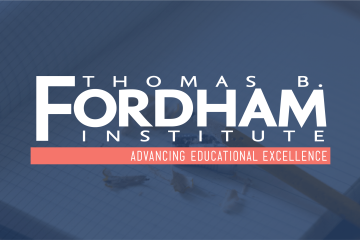Earlier this month on her “Answer Sheet” blog in the Washington Post, Valerie Strauss ran a lengthy rebuttal written by Carol Burris about a study that we recently published. Robbers or Victims? Charter Schools and District Finances was written by Mark Weber of the New Jersey Policy Perspective and analyzed how the growth of charter schools was linked to district-level revenue and spending—a highly contentious topic in education circles.
In a nutshell, Weber’s study found that, in most states, an increase in the percentage of students attending independent charter schools was associated with a significant increase in their host districts’ total revenue per pupil, total spending per pupil, local revenue per pupil, and per-pupil spending on support services. Notably, it also found that host districts’ instructional spending per pupil remained neutral to positive in all twenty-one states, consistent with the growing body of research that suggests that charter competition also has a neutral to positive effect on the achievement of students in traditional public schools.
After reading Ms. Burris’s flawed critique of the study, and upon a last-minute invitation from Ms. Strauss to reply, we sent a response—of which she published a small portion on her blog. For those interested in reading our full rebuttal, we include it below.
—
We appreciate the opportunity to respond to a recent Answer Sheet blog post about a new study conducted by researcher and educator Mark Weber, Robbers or Victims? Charter Schools and District Finances, published by our think tank, the Thomas B. Fordham Institute.
As Ms. Strauss notes, Dr. Burris is a committed opponent of charter school expansion who has “studied this so-called choice movement for years.” Her employer, the Network for Public Education (NPE), thinks charters that are free from school district control have no place in our system—despite their popularity with parents (and those of color in particular).
The Fordham Institute’s position on charter schools is informed not only by the thirty-plus studies we’ve published on the subject, but by our work as a charter school authorizer in Ohio (for which we have consistently received an “exemplary” rating from the state due to our schools’ strong performance). However, contrary to what Dr. Burris implied in her column, the fees we receive for overseeing the schools in our portfolio only cover our authorizing expenses. Any excess funds are returned to the schools.
As for the substance of Dr. Burris’s critique, she is of course correct that the effect of charter schools on districts’ finances is difficult to isolate. But that’s always the case with complex systems with lots of moving parts, which is why the report characterizes the estimates as “associational.” Similarly, we agree that the inability to account for the movement of charter school students across traditional school district lines is an important limitation of the study—as Dr. Weber noted in the section called “Limitations.”
Based on Dr. Burris’s comments about “comparison groups,” it appears that she misunderstood the reports’ quantitative methods, which rely on implicit comparisons between and within school districts with differing levels of charter school enrollment. As the column notes, Dr. Burris is a former principal and educator, not an expert in quantitative research methods.
Be that as it may, states’ generous “hold harmless” payments to districts that experience enrollment declines (due to charters or other factors) are a matter of public record. So it makes sense that districts with more independent charter schools tend to get more state revenue per pupil. Similarly, the exclusion of independent charters schools from local revenue sources is well documented. And any funding that doesn’t follow students to charters stays in districts’ coffers. So again, it shouldn’t surprise us that districts with more independent charters collect more local revenue per student.
In short, many state and local policies guarantee that districts’ revenues per pupil will increase insofar as non-district charter schools reduce their enrollments, which is why Dr. Weber’s findings strike many observers as plausible.
To be sure, those findings are subject to interpretation. For example, Dr. Weber argues that increases in districts’ support spending show that districts are having a hard time reducing fixed costs—which is a reasonable interpretation. But in our view, the word “costs” can be deceiving in a public budgeting context, since districts will inevitably spend the money they receive (lest they be perceived as not needing it and subsequently receive less of it). And in any event, Dr. Weber’s finding that districts’ instructional spending per pupil—which includes things like teacher salaries, benefits, and classroom supplies—didn’t decline significantly in any state suggests that whatever additional “costs” districts incur are covered where it really matters.
In other words, we stand by our interpretation of the findings, which is that independent charter schools don’t pose a fiscal threat to local school districts that experience sizable increases in total revenues per student.
How could they?



